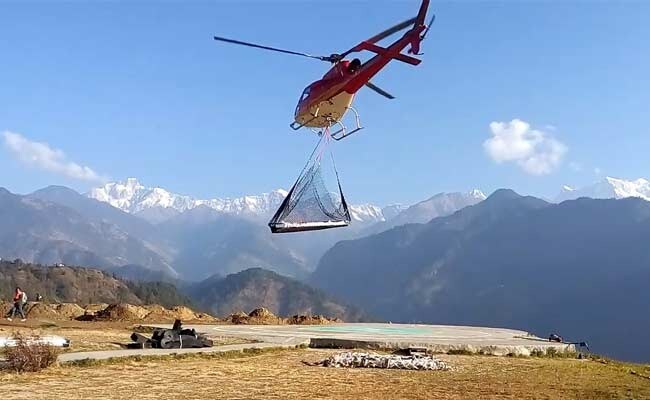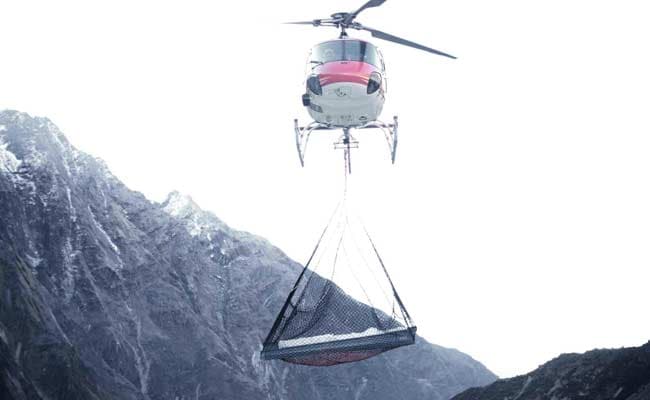
The operation was approved after a series of trainings and simulations conducted by a foreign pilots and experts.
Kedarnath:
As portals of Kedarnath in Uttarakhand closed for pilgrims for the winter with the drop in mercury on November 13, the region is still buzzing with reconstruction activity at the heart of which is a daring helicopter crew lifting loads up to 600 kg at an altitude of 11,600 feet.
Recovering from the destruction of the devastating 2013 floods in the states that washed away much of key infrastructure, the state government is building around 120 pre-engineered pilgrim cottages, three tier flood protection behind the temple, buildings for priests, river banks and other amenities.
All of this, including a disaster relief facility at Kedarnath base camp and Lincholi area, is coming up at the confluence of Saraswati and Mandakini, much of it with the help of a private B-3 helicopter.
"A B-3 helicopter is being used for airlifting loads by carrying it beneath the helicopter. The operation requires extreme precision, expertise along with well-trained pilots, crew and ground staff," District Magistrate Chairman, District Disaster Management Authority, Rudraprayag, Dr Raghav Langer said.
 After a series of trainings and simulations conducted by a foreign pilots and experts in Dehradun's Sahastradhara helidrome, the Directorate General of Civil Aviation approved the use of under-slung operation to start in the region.
After a series of trainings and simulations conducted by a foreign pilots and experts in Dehradun's Sahastradhara helidrome, the Directorate General of Civil Aviation approved the use of under-slung operation to start in the region.
While the external lifting of loads is a common practise in foreign countries as well as the defence sector, the under slung load lift being carried out by a commercial B-3 helicopter with such heavy loads and such altitude, with ever changing wind speeds and air pressure, is a rare feat.
"Captain Vijay Madan and his team have been doing a remarkable job that deserves appropriate acknowledgement. Not only will this fasten the speed of on-going reconstruction work and save the process of manual transportation of heavy loads along the 16 km stretch. Air induction is both time and cost-effective," Dr Langer said.
Recovering from the destruction of the devastating 2013 floods in the states that washed away much of key infrastructure, the state government is building around 120 pre-engineered pilgrim cottages, three tier flood protection behind the temple, buildings for priests, river banks and other amenities.
All of this, including a disaster relief facility at Kedarnath base camp and Lincholi area, is coming up at the confluence of Saraswati and Mandakini, much of it with the help of a private B-3 helicopter.
"A B-3 helicopter is being used for airlifting loads by carrying it beneath the helicopter. The operation requires extreme precision, expertise along with well-trained pilots, crew and ground staff," District Magistrate Chairman, District Disaster Management Authority, Rudraprayag, Dr Raghav Langer said.

While the external lifting of loads is a common practise in foreign countries as well as the defence sector, the under slung load lift being carried out by a commercial B-3 helicopter with such heavy loads and such altitude, with ever changing wind speeds and air pressure, is a rare feat.
"Captain Vijay Madan and his team have been doing a remarkable job that deserves appropriate acknowledgement. Not only will this fasten the speed of on-going reconstruction work and save the process of manual transportation of heavy loads along the 16 km stretch. Air induction is both time and cost-effective," Dr Langer said.
Track Latest News Live on NDTV.com and get news updates from India and around the world

